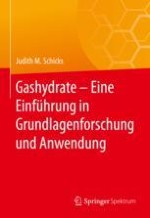2021 | OriginalPaper | Buchkapitel
4. Thermodynamische Eigenschaften einfacher und gemischter Gashydrate
verfasst von : Judith M. Schicks
Erschienen in: Gashydrate – Eine Einführung in Grundlagenforschung und Anwendung
Verlag: Springer Berlin Heidelberg
Aktivieren Sie unsere intelligente Suche, um passende Fachinhalte oder Patente zu finden.
Wählen Sie Textabschnitte aus um mit Künstlicher Intelligenz passenden Patente zu finden. powered by
Markieren Sie Textabschnitte, um KI-gestützt weitere passende Inhalte zu finden. powered by
